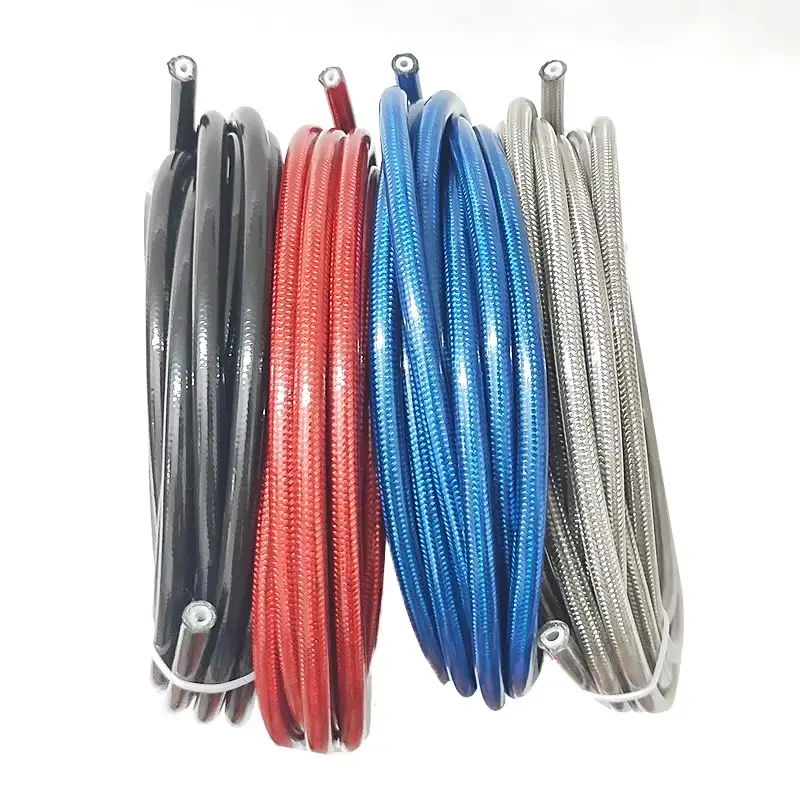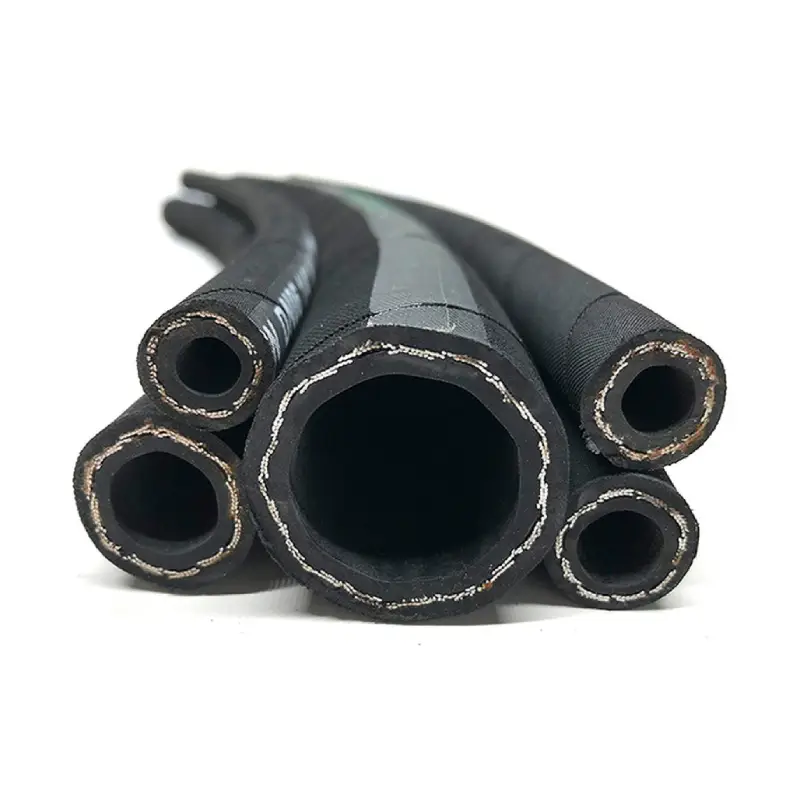Get Your Desired Braided Hydraulic Hose from China
Source the perfect braided hydraulic hose from China with Gushan Rubber. We specialize in manufacturing flexible hoses with single or double steel wire braiding, ideal for medium to high-pressure applications. Our braided hydraulic hoses meet international standards and can be customized to your project specifications.
Leading Braided Hydraulic Hose Manufacturer from China
As a leading manufacturer in China, Gushan Rubber delivers braided hydraulic hoses trusted by clients worldwide. Our hoses feature durable synthetic rubber and robust steel wire braiding for superior flexibility and pressure resistance. We offer competitive wholesale pricing and are committed to meeting diverse industrial needs.

Braided Hydraulic Hose reinforcement
A braided hydraulic hose is reinforced with one or more layers of high-tensile steel wire or synthetic fibers. These strands are woven together in a crisscrossing, braid-like pattern over the hose’s inner tube. This design provides the hose with a good balance of strength and flexibility, making it ideal for a variety of medium to high-pressure applications.
Materials: High-tensile steel wire is common; synthetic fibers are used for lighter, non-conductive needs.
Construction: Braiding machines interlace wire/fibers around the inner core for single or double layers.
Function: Prevents expansion/bursting under pressure, provides flexibility and kink resistance for dynamic systems.
We Manufacture All Braided Hydraulic Hoses
As a leading hydraulic hose manufacturer, Gushan Rubber produces a comprehensive range of braided hydraulic hoses. We offer hoses with single and double steel wire braiding, engineered for superior flexibility and durability. Our products meet international standards and are trusted for their reliable performance in various applications.
steel braided hydraulic hose

We specialize in manufacturing stainless steel braided hydraulic hoses for applications requiring superior corrosion resistance and strength. Our hoses feature a high-quality inner tube with one or two layers of braided stainless steel, providing exceptional durability, high-pressure ratings, and resistance to abrasion. We offer custom solutions for your specific needs.
braided hydraulic brake hose

Gushan Rubber manufactures high-performance braided hydraulic brake hoses for a wide range of vehicles. Our hoses are reinforced with durable steel braiding to prevent expansion under high pressure, ensuring a firm, responsive brake pedal feel. They are built for superior safety and long-lasting reliability in demanding automotive applications.
wire braided hydraulic hose

Gushan Rubber manufactures high-quality wire braided hydraulic hoses for a wide range of applications. Our hoses are reinforced with one or two layers of high-tensile steel wire braiding, providing exceptional strength and flexibility. We offer customized products, competitive pricing, and a commitment to meeting global industry standards.
Customize Your Desire Braided Hydraulic Hose
As a leading hydraulic hose manufacturer, we understand that standard hoses may not always fit your unique requirements. That’s why we offer extensive customization options to ensure you get the exact product you need for your specific application, guaranteeing optimal performance and safety.
Size
We offer a wide range of inner diameters and lengths to ensure a perfect fit for your equipment. Whether you need a small hose for a compact machine or a long assembly for a large-scale project, our team can customize the hose length to your precise specifications, preventing waste and ensuring efficient routing.
Pressure Rating
We can engineer braided hydraulic hoses to meet various pressure requirements by adjusting the number and type of reinforcement layers. For higher pressures, we use multiple layers of high-tensile steel wire braiding, while single-braid options are available for lower-pressure applications, optimizing both performance and cost.
Temperature Range
Our braided hoses hydraulic are designed to operate across a broad spectrum of temperatures. We can customize the synthetic rubber materials used in the inner tube and outer cover to withstand extreme heat or cold, ensuring the hose maintains its flexibility and integrity in the most demanding environmental conditions.
Outer Cover Materials
The outer cover protects the hose from external damage. We offer various cover materials, including options for abrasion resistance, ozone resistance, and flame retardancy. These customizations extend the hose’s lifespan and enhance safety in harsh operating environments, from mining to marine applications.
Quote Braided Hydraulic Hose Now
As a leading hydraulic hose manufacturer, Gushan Rubber provides high-quality braided hydraulic hoses at competitive wholesale prices. Our hoses are built with superior steel wire reinforcement for excellent flexibility and durability. Contact us now to receive a personalized quote tailored to your specific project needs and requirements.

